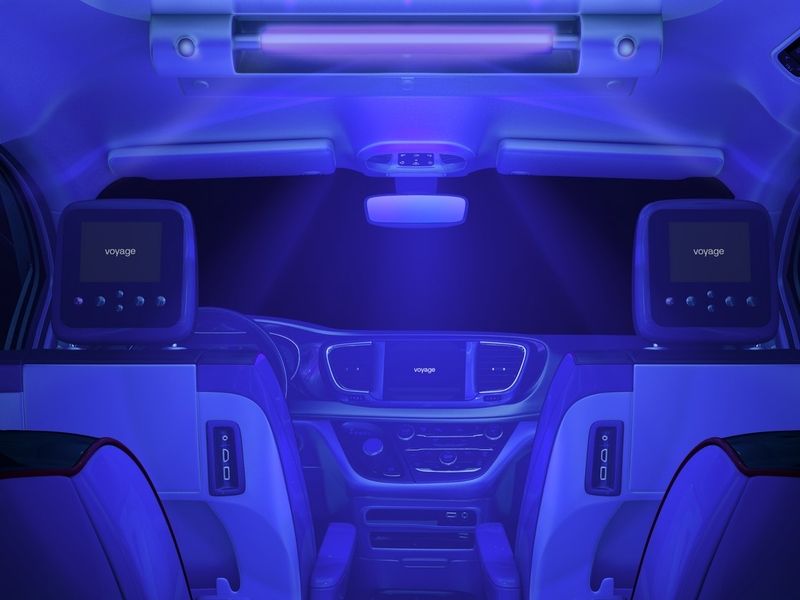
A pair of self-driving car startups are offering a solution to commuters shunning shared transportation in the midst of a pandemic: ultraviolet rays.
Voyage and May Mobility, two autonomous-vehicle companies that charge riders to go on simple, specialized routes, are putting UV-light emitters in their shuttles to help keep their services running. The rays are already used in ambulances and can destroy viruses, fungus and bacteria between rides.
The effort echoes Avis Budget Group Inc.’s move to market its partnership with Lysol maker Reckitt Benckiser Group to boost disinfection protocols for its rental cars. Uber Technologies Inc. and Lyft Inc. also have taken steps to keep riders safe, though both are transporting far fewer people than before COVID-19.
Voyage’s service offers low speed trips on predictable routes to riders in two massive retirement communities in California and Florida. The company is putting the UV system in its third-generation vehicle — a retrofitted Chrysler Pacifica minivan — that costs half as much as previous models, CEO Oliver Cameron said in an interview. That helps make the roughly $2,000 added cost of the UV system more palatable. The new vehicle also can run without a safety driver.
May Mobility will resume its service in downtown Grand Rapids, Mich., on Aug. 31 after suspending service in March. Its 3.2-mile route has 20 stops on each side of the Grand River that runs through the city and connects downtown to two business districts.
“Their solutions may seem niche, but building a somewhat profitable self-driving business, even if small, can be an effective strategy to raise funds and transfer their operational know-how to improve their technology at a faster pace,” BloombergNEF analyst Alejandro Zamorano-Cadavid said.